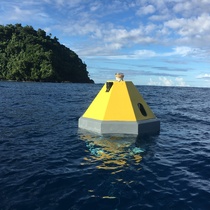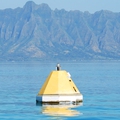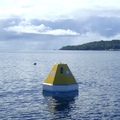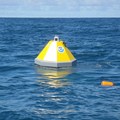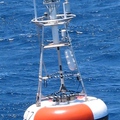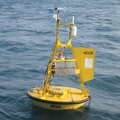Fagatele Bay
National Marine Sanctuary of American Samoa (14.36°S, 170.76°W)
In May 2019, NOAA and partners established a new buoy in Fagatele Bay within National Marine Sanctuary of American Samoa to monitor ocean acidification in a vibrant tropical coral reef ecosystem. The National Marine Sanctuary of American Samoa, co-managed by NOAA and the American Samoa Government, is located in the cradle of Polynesia’s oldest culture and is thought to support the greatest diversity of marine life in the National Marine Sanctuary System, including a wide variety of coral and other invertebrates, marine plants, fishes, marine mammals, and turtles such as the critically endangered hawksbill sea turtle. The sanctuary protects extensive coral reefs, including some of the oldest and largest Porites coral heads in the world, along with deep water reefs, hydrothermal vent communities, rare marine archaeological resources, and important fishing grounds. Despite its small size, Fagatele Bay supports exceptional biodiversity, with more than 160 species of coral found within a quarter-square-mile.
The new buoy is primarily funded by NOAA’s Ocean Acidification Program with numerous partners, including NOAA’s Atlantic Oceanographic and Meteorological Laboratory, Coral Reef Conservation Program, Pacific Islands Fisheries Science Center, and National Marine Sanctuary of American Samoa, as well as the Pacific Islands Ocean Observing System (PacIOOS), National Park of American Samoa, Department of Marine and WildlifeResources of American Samoa, and the Coral Reef Advisory Group of American Samoa.
Near real time surface seawater and air xCO2 as well as seawater pH data can be viewed below and at the PacIOOS Water Quality Buoys site. Once sensors are recovered and data quality controlled, finalized data will be available at the National Centers for Environmental information (NCEI).

